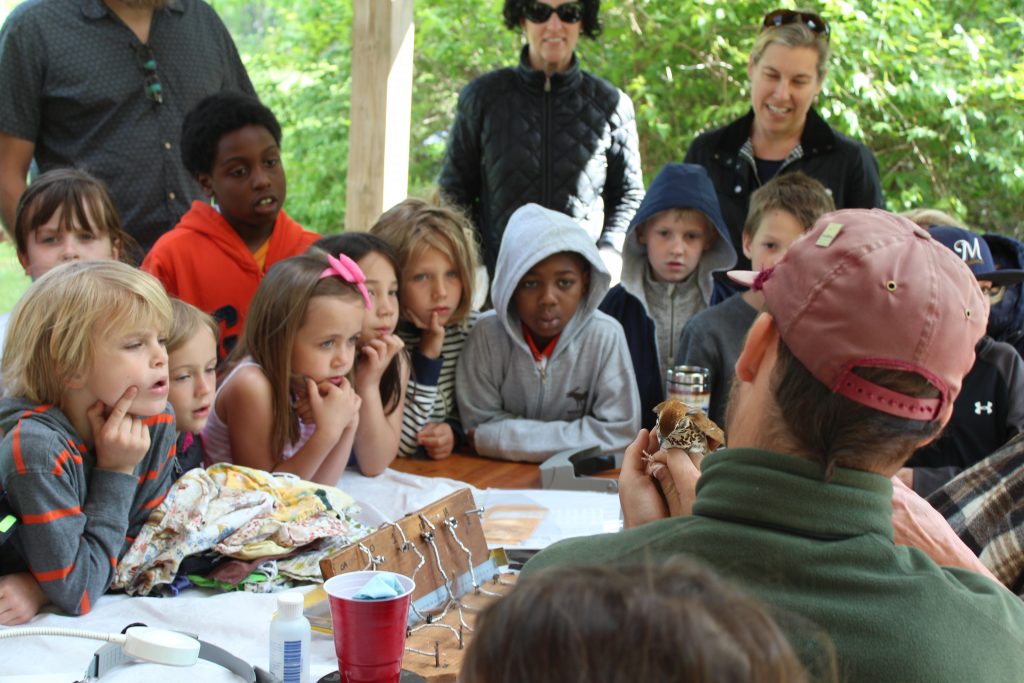Fall migration is just around the corner. And that means the banding station at Rushton Woods Preserve will be back in operation.
Bird banding is an important and powerful scientific tool in bird conservation. Understanding our reasons for banding and being able to relate those reasons to the public, along with proper training and the maintenance of high scientific standards is necessary for the success of our banding/outreach program.

Rushton Woods Preserve (RWPR) lies within an Audubon Important Bird Area (IBA), offering a great opportunity for banding and allowing us to study the seasonal and long term population patterns and species diversity of migratory and breeding birds. The RWPR banding project contributes to continent-wide monitoring efforts and exemplifies the benefits of low-impact land management practices on bird populations. The RWPR station also allows us to train committed volunteers in the basics of bird banding and creates a setting for responsible nature education and conservation outreach.
In 1595, one of Henry IV’s banded Peregrine Falcons was lost in pursuit of a bustard in France. The falcon showed up 24 hours later in Malta, 1,350 miles away; thanks to banding, they were able to calculate that the falcon averaged a speed of 56 miles per hour. Duke Ferdinand placed a silver band on a Grey Heron around 1669 and the bird was then recovered by his grandson in about 1728, indicating that the heron had lived at least 60 years. In 1803, John James Audubon tied silver cord to the legs of a brood of Eastern Phoebes near Philadelphia and was reportedly able to identify two of the nestlings when they returned to the neighborhood the following year.
These centuries-old records are not only amazing, but gave inspiration to naturalists and scientists interested in understanding the mystery of migration. Today, bird banding is helping to answer questions not only about migration and longevity, but also site productivity, dispersal of young, metapopulations , site fidelity, survivorship, behavior, ecotoxicology and many other population ecology questions important to bird conservation and management around the world. In North America, banding is overseen by the US Geological Survey’s Bird Banding Laboratory (within the Department of the Interior) and the Canadian Wildlife Service. These offices issue federal permits, distribute bands, and compile all the data collected from bird banding. All of the data collected at the RWPR is sent here and is made available to researchers and other banders. Learn more at https://www.pwrc.usgs.gov/BBL/homepage/history.htm.
If you would like to observe the banding process and learn about the science, banding activities at the Rushton Woods Preserve banding station are open to the public on Tuesdays and Thursdays. See our events calendar for dates, time, and other details.

